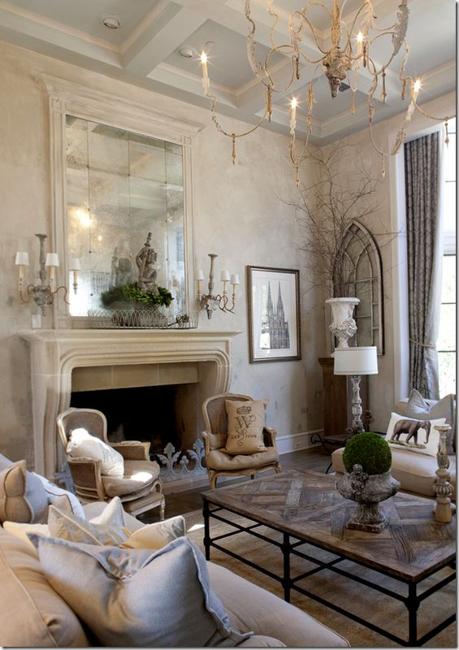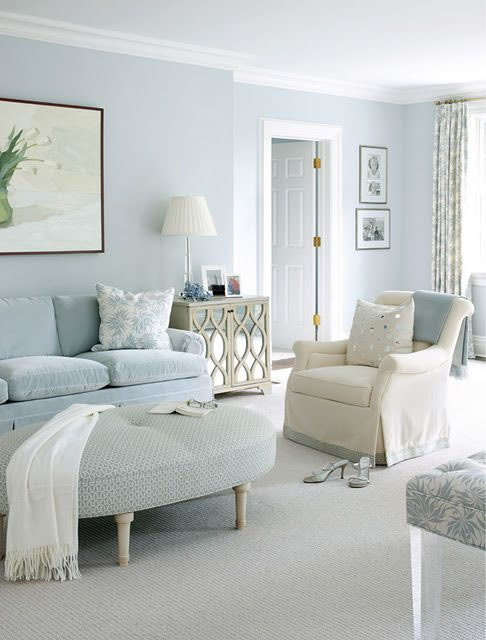When it comes to designing a kitchen, one of the most important decisions is selecting the right color scheme. A light kitchen color scheme has been a timeless choice for homeowners who want to create an inviting, open, and refreshing atmosphere. There’s something about a bright, airy kitchen that makes it feel more spacious and clean, even if the actual space is limited. Choosing the right combination of light colors can also impact the mood and functionality of the room. From soft whites to pastel hues and muted neutrals, light colors can make a world of difference in the heart of the home. When done right, these color schemes can enhance the natural light in your kitchen, making it feel even more welcoming and peaceful.
One of the most popular light kitchen color schemes is an all-white look. White has always been a classic choice because it’s versatile and timeless. It has this amazing ability to reflect light, making even the smallest kitchens feel larger and more open. But an all-white kitchen doesn’t have to feel cold or sterile. By incorporating textures like marble countertops, subway tile backsplashes, or wood accents, you can add warmth and dimension to the space. Even using different shades of white can create depth and prevent the kitchen from looking flat or boring. The great thing about white is that it serves as a blank canvas, allowing you to easily change up the look of your kitchen by switching out accessories, such as lighting fixtures or cabinet hardware.

Another light kitchen color scheme that’s gaining popularity is the use of soft, muted pastels. Colors like pale blue, mint green, blush pink, and lavender bring a touch of color to the kitchen without overwhelming the space. These pastel shades have a calming and cheerful vibe, making them perfect for a kitchen where you’ll be spending a lot of time preparing meals and gathering with family. Pairing pastel cabinets with white or light gray countertops can create a balanced look, keeping the space feeling light and airy. You can even mix and match pastels for a more playful, eclectic vibe while still maintaining a cohesive and stylish design.
If pastels aren’t your thing, consider using neutral tones like light gray, beige, or taupe for your kitchen color scheme. These colors are elegant and understated, creating a sophisticated and timeless look. Light gray kitchens, in particular, have become a popular trend in recent years. The beauty of using neutral colors is that they complement a wide variety of design styles, from modern to traditional to farmhouse. Light gray or beige cabinets paired with white countertops or light wood floors can create a warm and inviting space without feeling too bold. Neutrals also allow for easy updates to your kitchen décor because they serve as a great backdrop for introducing pops of color through accessories like rugs, curtains, or artwork.

One aspect to consider when choosing a light kitchen color scheme is how well it complements the natural light in your kitchen. Kitchens with lots of windows or open layouts benefit from light colors because they reflect sunlight, making the space feel brighter throughout the day. But even if your kitchen doesn’t get a ton of natural light, a light color palette can help brighten the space. In darker kitchens, choosing warmer light tones like cream, soft yellow, or warm beige can add warmth and prevent the space from feeling too cool. The key is to balance the lighting and colors to create a cozy and comfortable atmosphere that feels both inviting and functional.
Light kitchen color schemes can also make it easier to create a cohesive look between different elements in the kitchen. For example, when working with a lighter color palette, you have more flexibility when selecting materials for countertops, backsplashes, and flooring. White marble or quartz countertops pair beautifully with light cabinets, while light wood floors or white tile can complement the overall scheme without clashing. It’s all about creating a harmonious design where every element works together to enhance the space. Even small details like the color of your appliances, cabinet hardware, or lighting fixtures can either stand out or blend seamlessly into the design, depending on the overall aesthetic you’re going for.

One of the challenges of using a light color scheme is the potential for it to feel too plain or sterile if not done thoughtfully. To prevent this, it’s important to layer textures and finishes to add visual interest and warmth to the space. Incorporating natural materials like wood, stone, or metal can bring in a sense of texture and contrast that elevates the design. For example, pairing white cabinets with a wood island or using a stone backsplash can create a dynamic look that feels both modern and timeless. Don’t be afraid to mix and match different textures to achieve a balanced and inviting kitchen.
Another benefit of light kitchen color schemes is that they tend to age well over time. Unlike bold, trendy colors that might go out of style in a few years, light colors are classic and timeless. This makes them a great choice if you’re looking for a design that will still feel fresh and relevant down the road. Light colors also have the added advantage of being easier to clean and maintain, as they tend to show less wear and tear compared to darker colors. Stains, scratches, and fingerprints are often less noticeable on light-colored surfaces, making them a practical choice for busy kitchens.
Choosing a light kitchen color scheme doesn’t mean you have to stick to just one color. In fact, incorporating different shades and tones of light colors can add depth and complexity to the space. For example, combining white cabinets with light gray countertops and a soft beige backsplash can create a layered look that feels sophisticated and cohesive. You can also play with the finishes of different elements in the kitchen. Matte finishes can create a more understated and subtle look, while glossy finishes reflect light and add a touch of glamour to the space.
Lighting also plays a crucial role in enhancing a light kitchen color scheme. Natural light is always ideal, but you can also use artificial lighting to bring out the best in your design. Pendant lights, under-cabinet lighting, and recessed ceiling lights can all be strategically placed to highlight key areas of the kitchen and enhance the overall brightness of the space. When selecting light fixtures, consider the style and color of the fixtures as part of the overall design. For instance, brass or gold fixtures can add warmth and elegance, while chrome or stainless steel can create a sleek, modern look.

It’s also important to think about the mood you want to create in your kitchen. Light colors have a calming and uplifting effect, which is why they’re so popular in kitchens where we spend so much of our time. If you want your kitchen to feel serene and peaceful, opt for cool-toned light colors like pale blues, greens, or grays. On the other hand, if you want to create a warm and inviting atmosphere, warmer tones like cream, beige, or soft yellows can do the trick. The key is to choose colors that resonate with you and the overall vibe you want for your home.
When designing a kitchen with a light color scheme, don’t forget about the importance of balance. Too much light can sometimes feel overwhelming, so it’s a good idea to introduce some darker or more saturated elements to ground the space. This could be through the use of darker wood accents, a bold light fixture, or even a statement backsplash. These touches of contrast can add depth and dimension to the design, preventing it from feeling too one-dimensional.
Finally, one of the best things about a light kitchen color scheme is how versatile it is. Whether your style leans more modern, traditional, or somewhere in between, light colors can be adapted to suit your personal taste. You can easily dress up or down a light-colored kitchen with the right accessories, hardware, and décor. For example, adding vintage-inspired hardware and lighting can give a light kitchen a more rustic or farmhouse feel, while sleek, minimalistic accents can create a contemporary vibe. The possibilities are truly endless when working with a light color palette.

Common Mistakes to Avoid:
One of the most common mistakes when using a light kitchen color scheme is failing to add enough contrast or texture. Without these elements, the space can end up feeling too flat or sterile. Always incorporate different materials like wood, metal, or stone to create visual interest.
Another mistake is neglecting the lighting. Even with light colors, poor lighting can make the kitchen feel cold or washed out. Make sure to use a mix of natural and artificial lighting to enhance the brightness of the space.
A lack of maintenance can also be an issue. While light colors are forgiving when it comes to stains, they still require regular cleaning to keep them looking fresh. Be sure to use proper cleaning methods to avoid damaging surfaces like painted cabinets or stone countertops.
Some people make the mistake of going too monochromatic. While light colors are beautiful, adding a bit of color or darker accents can help break up the monotony and give the space more personality.
Finally, don’t overlook the importance of accessorizing. A light kitchen needs thoughtful décor, from hardware and lighting to plants and artwork, to feel complete and inviting.

Are light kitchen color schemes hard to maintain?
Light kitchen color schemes are easier to maintain than some might think. While they can show dirt and grime more easily, their light-reflecting nature also makes stains and smudges less noticeable, particularly on matte or textured surfaces. Regular cleaning is all it takes to keep a light-colored kitchen looking fresh and spotless.
What colors complement a light kitchen?
Light kitchens are versatile and can be complemented by a range of accent colors. For a soft, airy look, pastel hues like pale blue, mint green, or lavender work well. If you want to add warmth, golds, soft yellows, or light wood tones can be great choices. Adding a bit of dark contrast, such as navy or charcoal accents, can also create a balanced and sophisticated look.
Can a light kitchen color scheme work in a small space?
Absolutely! Light colors, especially whites, and soft neutrals can make small kitchens feel more open and spacious by reflecting natural light. Pairing light-colored walls and cabinetry with simple, clean lines can enhance this effect and make the room feel bigger.
Do light-colored kitchens go out of style?
Light kitchen color schemes are timeless and tend to age well. Unlike bold or trendy colors that may feel outdated after a few years, light colors remain fresh and versatile. Their classic appeal makes them a great long-term choice for any kitchen.
What materials work best in a light kitchen?
Natural materials like wood, stone, and marble complement light kitchen color schemes beautifully. White marble countertops, for instance, work well with light cabinets, while light wood floors or backsplash tiles add texture and warmth to the design.
How do I add warmth to a light kitchen?
Adding warmth to a light kitchen can be achieved through the use of materials and accents. Warm-toned wood, brass or gold hardware, and soft textiles like rugs or curtains can all introduce a cozy feel. Warmer light tones, like soft beige or cream, can also prevent the space from feeling too cold or clinical.

Related Posts:
- Lighting Stores Kitchener Ontario
- Kitchen Taps With Lights
- Kitchen Lighting Ideas Images
- Kitchen Task Lighting Ideas
- Battery Lights For Kitchen Cabinets
- Color Temperature Kitchen Lighting
- Kitchen Lighting Pics
- Kitchen Lighting Installation
- Light Grey Kitchen Cabinets With Dark Countertops
- Globe Kitchen Pendant Light